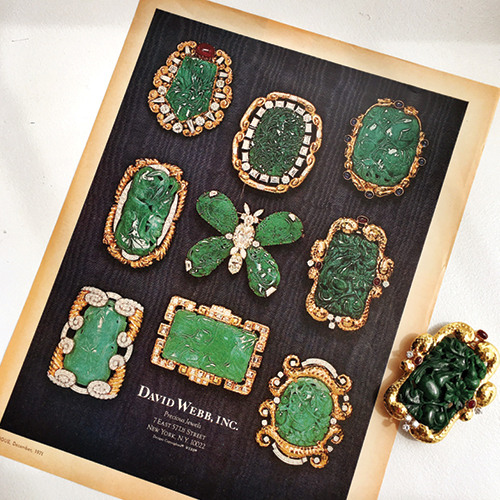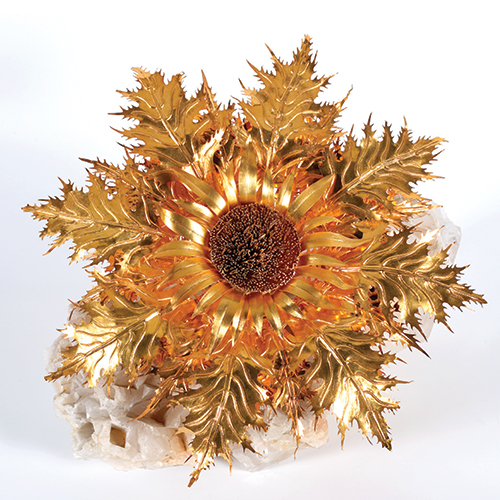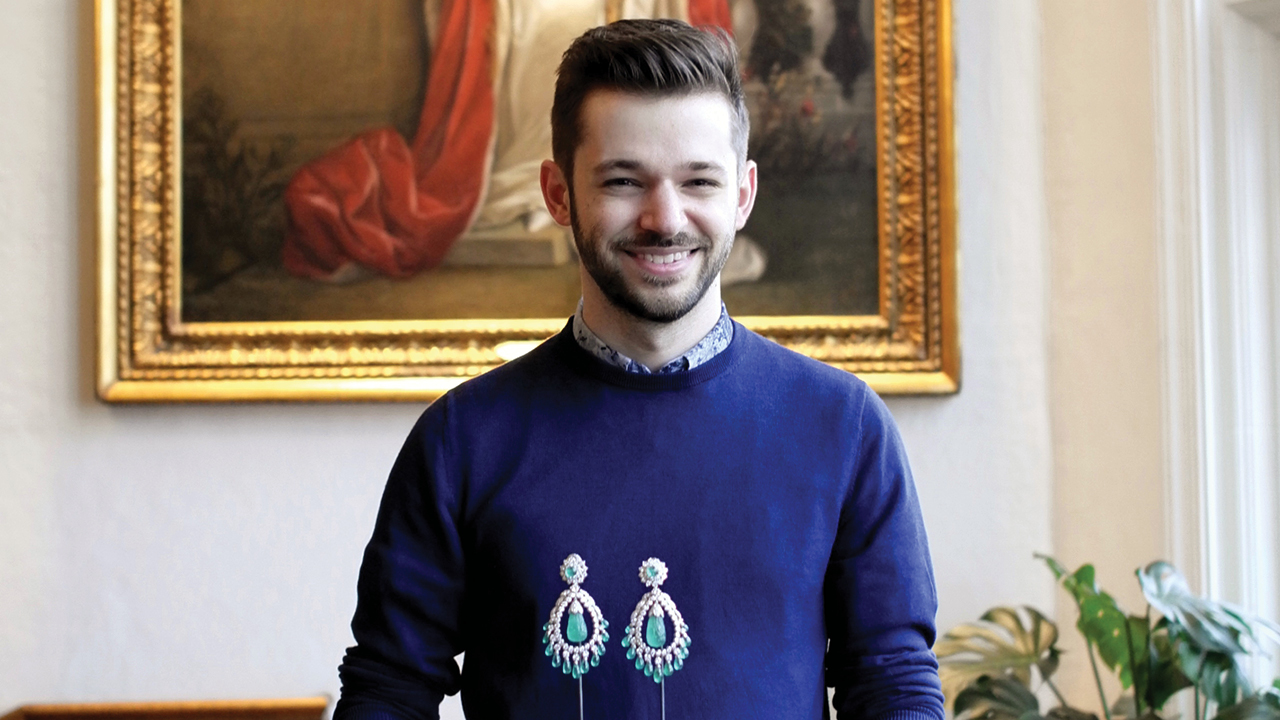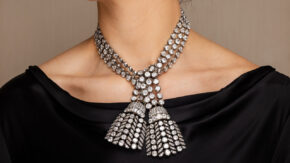“A strong archive is the nexus of the entire brand DNA,” states Levi Higgs, head of archives and brand heritage at David Webb. “It’s where one should constantly be referring to, as a north star, to remain true to the visual vocabulary of a brand.”
This is especially true, he says, for a brand like David Webb, which no longer has its founder at the helm. The celebrated New York jeweler passed away in 1975, but his work lives on, supported by an extensive archive of more than 40,000 renderings and sketches, as well as editorials, photos, look books, jewels, objets and client correspondence. Higgs is in charge of protecting and building on this legacy. He does it not just to preserve the past, but also to help shape David Webb’s future: Besides helping authenticate designs, his work inspires new ones.

“The archives help us look at schematics of jewels and know exactly how to make something from the original design,” he explains. “I’m constantly showing jewelers in our workshop original renderings of pieces from the ’60s so they can better understand their work as they piece something together from the original molds.”
For reference
Most people tend to associate archives with heritage brands, but these creative caches don’t appear overnight. Such vaults have to be built slowly, and while there can be many other pressing considerations for a young company starting out, keeping great records in real time can be hugely helpful for the future of a brand.
Elyse Zorn Karlin is codirector of the Association for the Study of Jewelry and Related Arts, as well as a jewelry historian, author, curator and lecturer. She believes the benefits of creating and maintaining an archive are manifold.
“[A good archive] makes it easy for writers, historians, appraisers, dealers and auction houses to [obtain] information about pieces they find, and credit the company,” says Zorn Karlin, who advises jewelers to use archiving software to keep track of photos, information and documents.

Such exposure can give a brand good publicity and ensure its place in the history books, she asserts. She also believes it can add value to jewels. “Documented pieces — in books, in archives, or similar pieces in museum collections — will also be highly desirable and will probably continue to increase in value.”
A rich archive can help a brand tell its own story as well. Higgs remembers being “overjoyed” to discover a film reel in the archives from 1964 that became the basis for David Webb’s first in-house exhibition, “A Walk in the Woods,” in 2022. “We digitized it, and it became a central component through which we could explore our plethora of animal jewels.”
The Art of Sharing
In the shadow of the Acropolis in Athens, Greece, Ioanna Lalaounis has spent the past 30 years building a museum based on the archives of the jewelry brand her father created, Lalaounis.
“We were very lucky to receive 4,500 original artifacts that he was collecting when he was presenting his work in exhibitions around the world,” she says.

The artifacts in question are jewels that Ilias Lalaounis made throughout his career. Some
are silver or gold-plated samples he created to display at exhibitions, while others are in 18- or 22-karat gold. Along with thousands of finished jewels, his daughter inherited 60,000 designs — sketches, wax models, prototypes. There is also an “enormous” PR archive, she says, and a library of hammers that were made for the Lalaounis workshop.

Being able to lean on the archives to show the evolution of the brand and its craftsmanship helps give weight to its current collections, she maintains. “You have to be able to justify why you are selling a 22-karat handmade pair of earrings for EUR 6,000 and not EUR 60. Justifying the craft and explaining about what the history of the craft is cannot be done unless you bring out the core of how it started.”
She also believes that craft brands have a duty to share knowledge. The Lalaounis museum is open to all and offers 17 educational programs for schoolchildren, as well as research sabbaticals for jewelry designers. It also assists students; two PhDs have already been written about Lalaounis with aid from its archives.
Keeping the Story Alive
As for how to build a good archive, Higgs suggests that besides being impeccably organized, one should think about the why, not just the what.
“Many [designers] think to keep their sketches or ad campaigns, but then the element that is lost is the storytelling narrative — the why of a piece,” he says. “I know of a few contemporary jewelers who keep notebooks next to their workbenches and record exactly the work they did that day, details on the design process, and how a piece unfolded from thought to finished jewel. That’s imperative for someone 50 years in the future to be able to tell a really focused story of the jewel that came to be.”
Image: Levi Higgs, head of archives and brand heritage at David Webb. (David Webb)
This article is from the July-August 2024 issue of Rapaport Magazine. View other articles here.
Stay up to date by signing up for our diamond and jewelry industry news and analysis.



